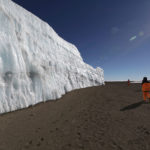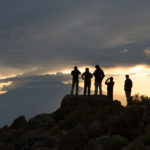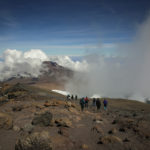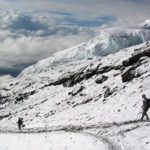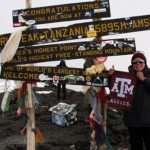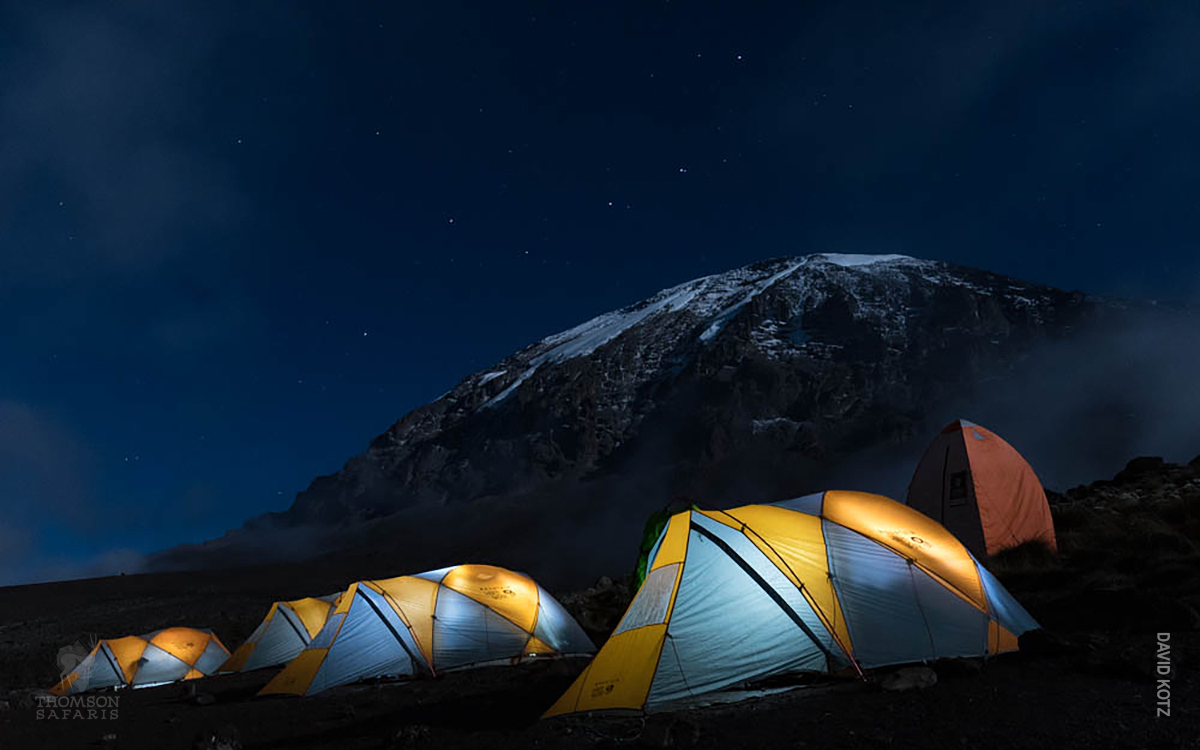
Karanga camp, elevation 13,249′ – Kilimanjaro, Tanzania
Photo: David Kotz
Kilimanjaro’s majesty is almost impossible to describe, but they always say a picture is worth a thousand words; photos of Africa’s highest peak convey the wonder and strange beauty of Kili immediately. Thomson Kilimanjaro trekkers regularly capture breathtaking images during their time on the mountain. The photographs are so impressive, we wanted to learn more about what went into them. In this ongoing series, our most avid photographers share some of the secrets behind the stunning images that make us all wonder “How’d you get that shot?”
David Kotz joins us today.
About the Photo
What do you like about this shot?
I enjoy the contrast between the warm glow of the tents, the cold, rocky summit, with the stars of the big dipper prominent in the sky.
What type of planning was involved in order to capture this image?
Although we spent most of this day in the clouds, I knew from previous evenings that the clouds would settle as the evening cooled. I keep in mind a sense of the moon’s path and schedule, and knew it would be rising soon after we all retired to the tents. Thus, while everyone was snuggling in for the night, I set up my tripod and waited… waited for the moon to rise behind me, for the clouds to dissipate, and for the summit to appear in the moonlight. In this shot I caught the clouds just right, but the big dipper had stated to set behind the shoulder of Kili.
Which camera did you use, and why?
My camera at the time was a Nikon D300, with the standard 16-80mm kit lens.
Which settings did you use? Are there any technical tips you have for photographers who are more advanced?
I had the lens at 20mm, shooting at 25 sec at f/13 and ISO 2000. Although I’ve found that ISO 2000 is rather high for the Nikon D300, the darkness hides a lot of the noise. Even with a tripod, I’ve found that 20-25 seconds is about as slow as I can go without motion blur in the stars; here I was concerned about motion blur from the clouds, but it turned out alright. f/13 ensured a large depth of field so both tents and peak would be in focus. I experimented a lot with these settings, on full manual, though my fingers were numb as the temperatures fell below freezing. After 30 mins I got this shot and knew I was done.
Which tools, during either the shooting or editing process, did you use to enhance the photo?
I shoot in RAW and edit exclusively in Adobe Lightroom, primarily because it allows me a convenient way to gather and organize all my photos, but also some powerful tools for editing each photo. I did very limited editing on this shot.
What advice do you have for Kilimanjaro trekkers who want to capture the perfect shot?
Perseverance. This shot was the fourth night in a row that I’d waited up late, or got up well before dawn, while everyone else was snuggled in warm tents, to set up my tripod and photograph the night sky. Thirty or forty minutes, experimenting with different angles and exposures, watching the sky and the clouds and the moon, looking for the right shot.
What’s your favorite tip to give fellow photographers?
Work the photo. Keep trying different angles, camera settings, and lighting; wait for the clouds to shift or the moon to rise. Experiment. Look for opportunities to capture interesting images.
About David
How many years of professional photography experience do you have?
Although I am not a professional photographer, I’ve been an amateur photographer for over 40 years. I’ve put a lot more of attention on honing my skills in the past decade.
What’s your favorite thing to photograph?
Interesting question! I enjoy photographing wildlife, but on Kilimanjaro I photographed mostly landscapes. I was pleased to find a lot of wildflowers to photograph too.
What do you think of a Kilimanjaro trek as an overall photographic opportunity? What made it special to photograph?
Tanzania is an incredible feast for photographers! The wildlife is plentiful and accessible, the mountain landscapes are varied and starkly beautiful. And most of all, the people are friendly and welcoming.
Where can we find your work?
Want to learn more about climbing Kilimanjaro?
Contact us today.

